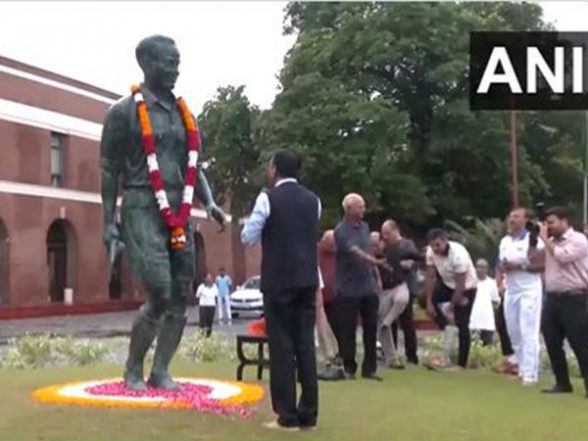Badminton or badminton has a long history and many versions. This sports game using two (single) and two pair (double) rackets and shuttlecocks evolved from the first century to the mid-19th century. The following is the history of world badminton from time to time.
1. From ancient Egypt, 2,000 years ago
Excerpt from the module “Shuttlecock/Kock Dancing Beautifully in the Air (2017)” accessible via the page Learning ResourcesAccording to the Ministry of Education and Culture, badminton or badminton developed in ancient Egypt around 2,000 years ago. However, badminton has also been mentioned in India and China.
2. Jianzi from China
The module also mentions that the ancestor of badminton would come from a Chinese game of the 5th century. His name is Jianzi, or ti jian zi according to Sigit Nugroho in his book, “Development of the Badminton Game (Faculty of Sports Science, 2020 UNY).
Jianzi has used the shuttlecock, but no racket yet. Because, Jianzi is only played with the feet. Its mission is to keep the shuttle from touching the ground for as long as possible. Because what was hit showed repeated ups and downs, wrote Sigit Nugroho, the term Shuttle bus (back and forth).
3. Battledores and ruffles in England
In medieval times, around the 16th century, there was a popular children’s game in England. It’s called Battledores and Shuttlecocks. In the “Shuttlecock/Kock Dancing Beautifully in the Air” module, it is mentioned that Battledores are the names of the sticks or paddles used to hit the shuttlecock.
After being hit, the shuttlecock will fall a little slowly, so that it can be chased away to be hit again. The story of the steering wheel is oval like a head. At the top which is slightly flat, inserted 16 goose feathers.
According to Agus in his book (2020:2), there are those who argue that the goose feather shuttlecock started when someone was sitting thoughtful and accidentally stuck a feather in the cap of the bottle lid which looked like a steering wheel.
Children back then played together, making the shuttle dance through the air and preventing it from falling to the ground. The game first appeared on the streets of London in 1854. This was revealed in cartoons published by Punch (London Charivari), a humorous and satirical weekly since 1841.
4. Poona in India
According to Betty Uber in her book, “A Brief History of Badminton 1870-194”, the modern style of badminton played head-to-head by two people or two pairs competing against a net originated in the city of Poona in India during the British war. colonial period mid 19th century.
In a book published by Read Books Ltd in 2011, Betty said the creators of modern badminton were British soldiers serving in Poona at that time.
Initially, upper class people preferred to use balls of yarn when the weather was windy or wet. However, shuttlecocks (usually feather and cork) ultimately remained the most popular. At that time, badminton was also known as Poona, named after his hometown.
Betty writes that the earliest photos from this time show the British adding nets to the traditional games of battledore and shuttlecock.
Initially, upper class people preferred to use balls of yarn when the weather was windy or wet.
However, in the end feather and cork shuttlecocks remained popular. India’s forerunner of modern badminton at that time was also called Poona after his hometown. Poona has now changed her name to Pune, a city in Maharashtra, India.
5. Rural badminton in England
Badminton is a rural name in Gloucestershire, England. In the countryside of Badminton, there is Badminton Park, a large house as well as a plantation belonging to the noble family of the Duke of Beaufort. In the castle-like mansion, badminton was first played indoors in England in the 1870s. Because the weather at that time was not great.
Since then, the village name and the house name have been immortalized as badminton names until now.
Watch videos”Police arrest men who confess Brimob members cheated on widows in Kudus“
[Gambas:Video 20detik]
(dil/mbr)

“Thinker. Food advocate. Incurable coffee enthusiast. Communicator. Proud student. Zombie buff. Tv fanatic. Extreme troublemaker.”







